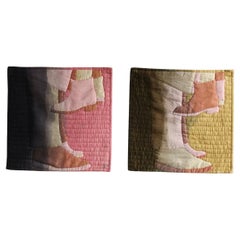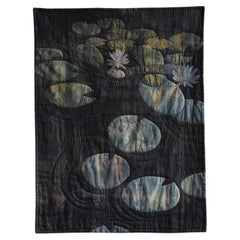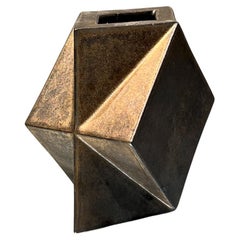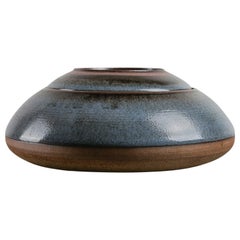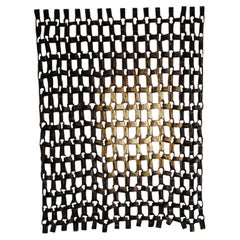Mercedes Pagoda
2010s Japanese Modern Textiles
Linen
2010s Japanese Modern Textiles
Linen
2010s Japanese Modern Textiles
Linen
People Also Browsed
20th Century Dutch Mid-Century Modern Vases
Ceramic
Vintage 1960s Italian Mid-Century Modern Decorative Boxes
Ceramic
Vintage 1930s Austrian Vienna Secession Books
Paper
Mid-20th Century Uzbek Tribal Persian Rugs
Wool
Vintage 1950s English Mid-Century Modern Decorative Bowls
Porcelain
20th Century English Mid-Century Modern Vases
Ceramic
Vintage 1950s Swedish Scandinavian Modern Ceramics
Cast Stone
Vintage 1980s Books
Paper
Vintage 1980s English Mid-Century Modern Decorative Bowls
Porcelain
Vintage 1910s Austrian Art Nouveau Ceramics
Ceramic
Vintage 1960s Italian Vases
Ceramic
Vintage 1970s British Modern Vases
Stoneware
Vintage 1970s English Modern Vases
Stoneware
2010s Japanese Modern Textiles
Linen
Mid-20th Century Persian Persian Rugs
Wool
Vintage 1970s British Modern Decorative Bowls
Stoneware
Recent Sales
2010s Asian Modern Textiles
Linen
2010s Japanese Modern Textiles
Linen
A Close Look at modern Furniture
The late 19th and early 20th centuries saw sweeping social change and major scientific advances — both of which contributed to a new aesthetic: modernism. Rejecting the rigidity of Victorian artistic conventions, modernists sought a new means of expression. References to the natural world and ornate classical embellishments gave way to the sleek simplicity of the Machine Age. Architect Philip Johnson characterized the hallmarks of modernism as “machine-like simplicity, smoothness or surface [and] avoidance of ornament.”
Early practitioners of modernist design include the De Stijl (“The Style”) group, founded in the Netherlands in 1917, and the Bauhaus School, founded two years later in Germany.
Followers of both groups produced sleek, spare designs — many of which became icons of daily life in the 20th century. The modernists rejected both natural and historical references and relied primarily on industrial materials such as metal, glass, plywood, and, later, plastics. While Bauhaus principals Marcel Breuer and Ludwig Mies van der Rohe created furniture from mass-produced, chrome-plated steel, American visionaries like Charles and Ray Eames worked in materials as novel as molded plywood and fiberglass. Today, Breuer’s Wassily chair, Mies van der Rohe’s Barcelona chair — crafted with his romantic partner, designer Lilly Reich — and the Eames lounge chair are emblems of progressive design and vintage originals are prized cornerstones of collections.
It’s difficult to overstate the influence that modernism continues to wield over designers and architects — and equally difficult to overstate how revolutionary it was when it first appeared a century ago. But because modernist furniture designs are so simple, they can blend in seamlessly with just about any type of décor. Don’t overlook them.
Finding the Right paintings-screens for You
Traditional Asian paintings were often created on scrolls and folding screens. Artisans made screens that could be folded up or spread out by connecting several panels using hinges. Today, antique Asian folding screens and paintings are sophisticated decorative accents that can serve as makeshift partitions to ensure privacy.
The original folding screens were created by Chinese artists. The earliest record of screens comes from the 2nd century B.C., and surviving examples date back to the Ming dynasty. Chinese painting utilizes many of the same tools as calligraphy — these screens were crafted from wood with painted panels featuring striking art or calligraphy that told cultural stories or represented nature and life in the area.
The practice was introduced to Japan, where paintings for screens were made on paper and silk, in the 8th century. These paintings frequently feature subjects such as landscapes, animals, flowers and Buddhist religious themes. Along with screens for tea ceremonies and dance backgrounds, there were screens for use in Shinto and Buddhist temples.
In the 17th century, screens began to be imported to Europe where their popularity grew. Coco Chanel famously collected Coromandel folding screens.
Traditional Asian paintings can make a tasteful addition to any wall, and screens can be used as decoration or, in the case of larger iterations, as an aesthetic way to divide a large room. Browse the selection of antique Asian paintings and screens from a variety of styles and eras on 1stDibs.
